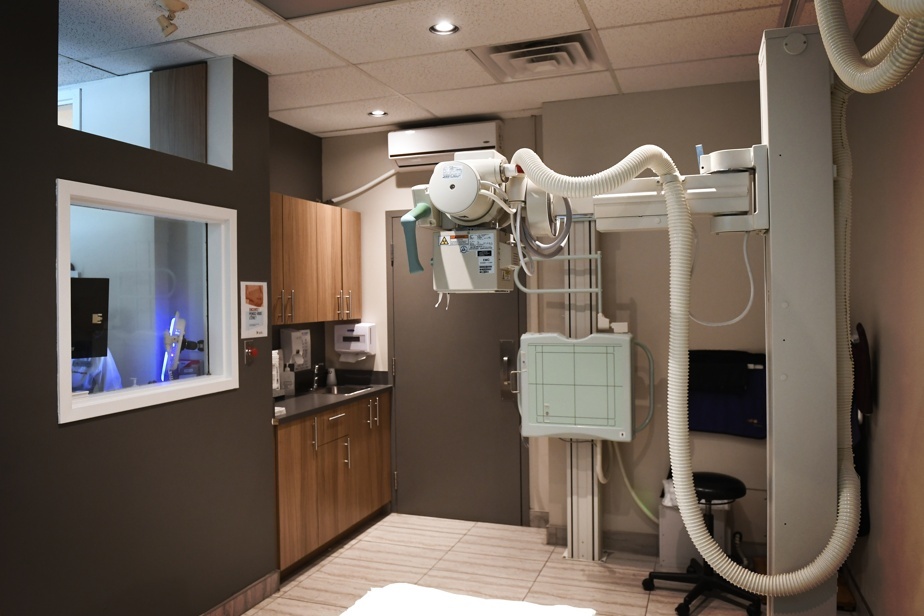Last week, the Quebec government announced that it would inject $1 billion into the health system to expand the province’s health human resources. The funds will be used to hire new employees as well as to extend working hours for part-time workers. Four groups were identified: nurses, licensed practical nurses, respiratory therapists, and clinical perfusionists. Unfortunately, medical imaging technologists are not included in this plan.
Medical imaging technologists are frontline workers and have had to endure the same pressures as other health care workers throughout the pandemic and deserve to be included alongside their peers. Thanks to multidisciplinary work that includes various players in the continuum of care, our hospitals, community service centers, medical clinics and medical imaging laboratories have succeeded in continuing to provide high-quality care to the people of Quebec.
Unfortunately, the lack of human resources in the health sector affects all sectors of the system and in the distribution of care, every link is important because they are all interconnected.
Medical imaging is the core of patient care. Most patients will have a medical imaging exam as part of their course of care to make the correct diagnosis, referral, treatment of disease or follow-up treatment. Cancer patients, whether it’s screening, a tumor biopsy, chemotherapy, radiotherapy, or planning surgery, will need imaging tests throughout their treatment. Interventional radiology with a therapeutic objective, which consists of minimally invasive procedures using ultrasound-guided needles, catheters, computed tomography or fluoroscopy, without open surgery, is experiencing significant growth, such as angioplasty and implants. Embolization of vascular or neoplastic lesions and excision of carcinoid tumors. Not only does it have a significant impact on patient care (less invasive procedure, shorter hospital stay, and easier convalescence), but it also allows our healthcare system to deliver better care at a lower cost, in terms of financial and human resources.
Medical imaging technologists perform diagnostic imaging exams, assist the radiologist with interventional procedures, place venous and urinary catheters, administer medications, and take vital signs. Their participation is at the heart of the patient care journey. If you have ever had an X-ray, mammogram, ultrasound, CT scan, or MRI scan, you are in contact with a medical imaging technician.
Les technologues en imagerie médicale participent aux soins des patients dans les services d’urgence, les soins intensifs, les salles d’opération, les départements d’imagerie diagnostique et les cliniques de radiologie pouring insi quemmé queographsé dans mobile unit breast cancer. Medical imaging technicians in Quebec and across Canada have bravely responded to the pandemic for the benefit of their patients and deserve to be congratulated and rewarded for their service, as they are on the front lines.
We are currently experiencing unprecedented delays in providing medical imaging services. Our waiting lists for access to diagnostic and interventional imaging exams continue to grow and this is slowing down the entire pathway of care. A recent pre-epidemic study, in collaboration with the Canadian Association of Radiologists (CAR) and the Canadian Conference Board, showed that the median waiting time for a CT scan is 67 days and an MRI scan is 133 days, far exceeding the recommended. Standard 30 days. Examinations classified as non-urgent, such as an MRI before orthopedic surgery, can take anywhere from 6 to 12 months in Quebec. This will affect the waiting list for surgery and the scheduling of professional medical consultation visits.
A recent survey by the Central African Republic of its members showed that the number one obstacle to catching up on our filming waiting lists is the shortage of technicians.
About 70% of respondents indicated that lack of human resources for medical imaging was the biggest obstacle to reducing waiting times.
In that spirit, it is troubling that the Quebec government’s recent announcement of a new injection of money into health human resources, has not included funding for medical imaging technicians. In order to ensure that Quebecers have access to timely diagnostic and interventional imaging tests, such as ultrasound, mammograms, MRIs, and CT scans, the current shortage of medical imaging technicians must be quickly addressed.
The Canadian Association of Radiologists, the Association of Radiologists of Quebec and the Canadian Society of Medical Radiation Technologists are asking the government of Quebec to support medical imaging technicians and come up with a plan to recognize their contribution.
In addition, we ask for a proposal to ensure that there are enough medical imaging technicians to treat patients today and in the future. We are pleased to have the opportunity to work in collaboration with the Government of Quebec in this endeavour.

“Subtly charming problem solver. Extreme tv enthusiast. Web scholar. Evil beer expert. Music nerd. Food junkie.”

